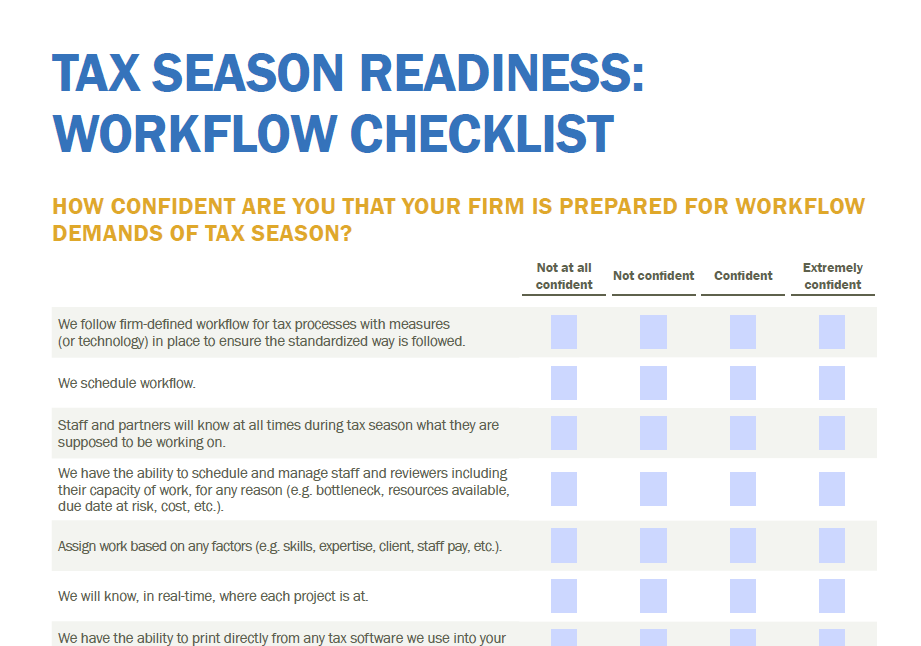Technology
Workflow Checklist: Is Your Firm Ready for Tax Season?
Tax season promises increased workload which tests the resolve of even the best-run firms. Call it ironic or perhaps even not fair; client expectations are at their highest at the time of year when your firm is saddled with maximum workload.
Nov. 02, 2016

Tax season promises increased workload which tests the resolve of even the best-run firms. Call it ironic or perhaps even not fair; client expectations are at their highest at the time of year when your firm is saddled with maximum workload. Client satisfaction often hinges on the firm’s ability to operate and deliver tax returns efficiently, making workflow a top priority.
Workflow is a firm function that needs to be continuously reviewed and improved. For example, recognizing workflow pain last tax season may have resulted in post-season debrief where workflow issues were discussed with the intent on resolving issues before now. If workflow and efficiency remain a priority it is not too late to make adjustments now to positively impact tax season.
Edward Mendlowitz, CPA/ABV/PFS/CFF wrote an article about maximizing efficiency in tax season. Mendlowitz outlines best practices to ensure the best facilitation of your tax season, adapted from his book Managing Your Tax Season. Notably, eight of twelve best practices he discusses are covered with the addition of workflow software. When tax season is upon us and workflow matters most, Mendlowitz would agree, taking measures to ensure you have technology needed to follow these best practices:
- Reduce touches by streamlining processes
- Schedule work flow
- Schedule staff
- Schedule reviewers and assign the proper level of reviewer to each project
- Examine bottlenecks and don’t let returns sit unattended
- Examine time spent preparing versus reviewing the return
- Measure productivity by preparer
- Make sure staff is clear on what needs to be done for each client
The first step to reduce touches and streamline processes, especially tax work, requires writing down every possible way the process is handled in your firm. The second step is to determine the most efficient and preferred way to handle the process then take measures to ensure this process is followed. This outcome is frequently referred to as the standardization of process. There is document management software and workflow software (e.g. Doc.It Suite) that creates a standardized process for tax and all other areas of work, while also providing workflow tools needed to ensure the firm is following best practices as defined by Mendlowitz.
For scheduling, examining and measuring best practices, workflow software may be needed. Now is the time to question whether your firm is equipped to handle some of the most common issues causing workflow problems during tax season. Our Tax Season Readiness: Workflow Checklist will reveal your level of confidence in your firm’s preparedness.
